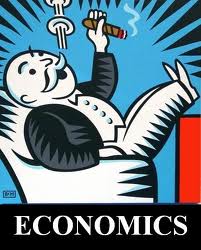Dealing With Rejection: 5 Ways to Turn a No Into a Yes

Dear Mr. Strauss: Thank you for your submission, but unfortunately …”
When you’re an entrepreneur, you hear the word “no” a lot. The not-so-fictional rejection letter above was just one of scores of similar responses I received for years from publishers back in the day when I was first trying to become a published writer. It took me almost a decade of hearing no before — finally! — that all-important yes came in the mail.
And that then raises the question: How do you deal with no? Or maybe even more important: How do you turn a no into a yes?
There actually are a lot of ways to turn a no into a yes, but let me first tell you one strategy that I don’t want you to use: mimicry. There’s a school of thought out there positing that if you subtly mimic people’s verbiage, body language and the like, you can subliminally create rapport with them. Somehow, they’re not supposed to notice that you’re mimicking them, nor be insulted or feel manipulated by it, and instead will suddenly realize that you just have so much in common that they need to do business with you.
As you can tell, I’m not a big fan of that strategy. That’s because 1) I’ve never seen it actually work, and 2) it is condescending and shallow.
Instead, here are five ways you really can turn that no into a yes:
1. Get a clue. No doesn’t always mean no. Instead, often, it’s just an easier answer than, “I’m not sure” or “I don’t know” or “I’m not ready at this moment to give you an answer.”
So your first step is to be able to ascertain whether a no is really just a way to buy some time. Small-business owners with whom you deal often resort to saying “no” because it saves time and is simply easier.
I remember one time when I was speaking with the representative of a big franchisor about carrying my USA Today column on their website, and while they seemed interested, the gentleman eventually said no. But since I knew that they truly were interested, I pressed a bit when normally I would not have — was there something they needed, anything else I could offer? Within five minutes of me starting this casual, extra conversation, the gentleman decided that they really did want to carry the column. They were my clients for the next five years.
Lesson: No does not always mean no.
2. It’s not you, it’s me. George Costanza’s famous breakup line is as applicable in business as it was on “Seinfeld.” If you hear “no” a lot — too much — it is probably a hint that you are doing something wrong. The challenge then is to zero in on what that thing is. It could be any number of items:
- Your pitch may be off, or too long, or not detailed enough.
- Your product could be too expensive, or maybe too mediocre.
- Maybe your offer has no compelling call to action.
The best way to figure this out is to share what you are doing with a trusted colleague. Don’t try and figure it out in a vacuum, because that obviously has not worked given the feedback the market has given you.
Or what about this: Ask the naysayer why he or she said no. Get some constructive criticism. The important thing is to get some feedback, learn from it, change things up, and get back out there.
3. Deal with the objections. The late, great sales guru and motivational speaker Zig Ziglar once said this about sales: “Every sale has five basic obstacles: no need, no money, no hurry, no desire, no trust.”
That is a lot of noes, a lot of potential objections. But by understanding that no may really mean a prospect is actually worried about some or all of Ziglar’s objections, you’ll be armed with the ability to handle those doubts. If you forthrightly deal with their fears or objections, whatever they may be, then a no will not necessarily be, as Regis Philbin used to say, their “final answer.”
5. Don’t take it too seriously. Having the right attitude about a no can really go a long way toward getting more yeses. After all, what is a no except a prelude to the next yes? As they say, smile and dial, smile and dial. As long as you keep throwing stuff against the wall, something is bound to stick.
Always remember that Babe Ruth was not only the home run king, but also a leader in strikeouts. There’s a good lesson for all of us in that.
For more career discussions, join our forum, HOTPROFORUM
See also
Subscribe free to JarusHub for more tips on careers and education
You may manage your subscription options from your profile
Established in March 2013, JarusHub is a Nigerian information hub with focus on career and management. It is rated Nigeria's most authoritative destination for online career resources. It parades an array of Nigerian professionals who share their career experiences with a view to bridging career information gap and mentoring a generation to success. JarusHub has revolutionised career information and experience sharing in Africa. Whether you're a student, a recent graduate or an established professional, or even an executive, you will always find something to learn on JarusHub. All enquiries to jarushub@gmail.com or 0808 540 4500. Facebook: www.facebook.com/jarushub; Twitter: @jarushub or @mcjarus.
Attend JarusHub’s 2024 Seplat Assessment Center Coaching
October 29, 2024
1 comment
Let us have your say by leaving a comment belowCancel reply
Recommended For You
-
NEXT-BEST: DILEMMA OF AN ECONOMICS ASPIRANT
September 21, 2014 -
Dilemma of a Frustrated Computer Science Student
July 17, 2018 -
He wants to be self-employed in the oil & gas industry
March 22, 2014






Sincerely,these five points are enough to manage any kind of REJECTION.